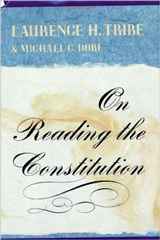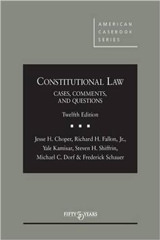Justice Clarence Thomas’s opinion for a 6-3 Supreme Court majority in New York State Rifle & Pistol Assn., Inc. v. Bruen (NYSR&P) invalidates a New York law restricting licenses to carry concealed handguns to persons able to demonstrate a “special need” for one. The opinion attempts to downplay its likely impact. The Court notes that New York is one of only six states plus the District of Columbia that impose such a requirement. That fact is not especially reassuring, however; with the exception of Maryland and the District, the states with so-called “may-issue” licensing schemes like New York’s have some of the lowest rates of gun deaths in the country. As a New York resident, I can only hope that the correlation between restrictions on public-carry and relatively low gun death rates is coincidental.
There is some reason for cautious optimism. Justice Thomas’s opinion speaks for six Justices, but two of them—in a concurrence by Justice Brett Kavanaugh joined by Chief Justice John Roberts—temper the ruling’s implications by emphasizing a point that Justice Thomas himself includes in a footnote. The concurrence makes clear that state laws requiring a license to carry a gun in public are valid, so long as they provide an opportunity for applicants to demonstrate that they will be responsible. The concurrence states that a so-called “shall issue” regime (as opposed to New York’s “may issue” law) can constitutionally “require a license applicant to undergo fingerprinting, a background check, a mental health records check, and training in firearms handling and in laws regarding the use of force, among other possible requirements.” New York, California, Massachusetts, and other states with “may issue” laws need not completely abandon gun control.
Yet regardless of whether NYSR&P ends up affecting the incidence of gun violence, the decision could have harmful long-term consequences. The Court adopts a methodology that focuses exclusively on history. That move could make it nearly impossible for government to protect people from new threats due to gun violence.
History, History, History
Constitutional rights are not absolute, even when their wording suggests otherwise. The First Amendment says Congress shall make “no law” abridging free speech and Justice Hugo Black used to like to say that “no law means no law,” but no one (not even Black himself) took that seriously. For decades, it has been conventional wisdom that laws infringing free speech and other constitutional rights are presumptively invalid but will be upheld if they satisfy so-called strict scrutiny—the least restrictive means of promoting a compelling government interest—or, in some instances, intermediate scrutiny—substantially advancing an important government interest.
As Justice Thomas notes for the majority in NYSR&P, in the years since 2008, when the Court first recognized an individual right to firearms possession under the Second Amendment in District of Columbia v. Heller, the federal appeals courts had coalesced around a two-part test for evaluating gun control laws. If a type of weapon was in common use for lawful purposes by law-abiding citizens (a pre-condition the Heller Court itself recognized as a threshold for Second Amendment protection), then restrictions on its possession would be subject either to strict scrutiny (if the restriction strikes at the core of the right) or intermediate scrutiny (if the restriction does not burden the core).
Justice Thomas rejects that framework in favor of an exclusively historical test: “the government must affirmatively prove that its firearms regulation is part of the historical tradition that delimits the outer bounds of the right to keep and bear arms.” Accordingly, Justice Thomas goes into great detail to recount and assess the history of gun regulation in England, the colonies, and the United States.
Justice Thomas’s version of the relevant history is tendentious. He uses a familiar lawyers’ trick of reversing the burden of proof. Thus, whereas a brief filed by leading historians amassed considerable evidence that “[n]either English nor American history supports a broad Second Amendment right to carry firearms or other dangerous weapons in public based on a generic interest in self-defense,” Justice Thomas says that there are not sufficiently many examples of English, colonial, early American, or Reconstruction-era laws restricting public carriage to disprove that the Second Amendment invalidates laws like New York’s. And he only reaches that conclusion because he repeatedly dismisses as outliers strict laws from various eras forbidding public carriage.
Categorization of Other Rights
Suppose for the sake of argument that Justice Thomas is right about the history. A version of New York’s law has been on the books for over a century. Nonetheless, let us indulge the majority by granting that this pedigree does not suffice to overcome the supposed original understanding of the Second Amendment. Even so, it is remarkable that Justice Thomas and the majority wholly reject any inquiry into the issue that occupies the dissent by Justice Breyer (joined by Justices Sotomayor and Kagan): whether the dangers posed by handguns in crowded American cities might justify elected officials charged with protecting the safety of people who live and work there in strictly limiting possession to people who can demonstrate a special need.
If the case involved just about any other fundamental right, the government would be given the opportunity to justify a law limiting the right by satisfying strict or intermediate scrutiny. Why, according to Justice Thomas, is the Second Amendment different? Remarkably, he claims that his new “Second Amendment standard accords with how [the Court] protect[s] other constitutional rights.” He then offers the example of free speech but badly mischaracterizes the case law.
Justice Thomas says that the government can justify a law restricting speech “[i]n some cases” by showing that “the expressive conduct falls outside the category of protected speech . . . [a]nd to carry that burden, the government must generally point to historical evidence about the reach of the First Amendment’s protections.” (Emphasis in original). That’s all true but beside the point. The government has two ways of justifying a law restricting expression: it can, as Justice Thomas notes, satisfy a historical test showing the expression falls into one of a number of unprotected categories; but it can alternatively satisfy strict scrutiny.
Justice Thomas offers no reasons at all why the government can respond to challenges under the Second Amendment by invoking only a historical test, whereas it can respond to challenges under the First Amendment that way and, should the defense fail, by trying to satisfy strict (or intermediate) scrutiny as an alternative. He does cite cases involving other rights that “require courts to consult history to determine the scope of that right,” but this maneuver is a non sequitur. No one denies that history is relevant to determining the scope of constitutional rights. The question is whether, once one determines that conduct falls within a right’s scope, strong government interests can override the right.
In other contexts, the answer is yes, if the government really proves its case. Here, the answer is no. Unless the government can find a persuasive historical analogy from the Founding (or possibly Reconstruction), no amount of evidence showing that the government needs to abridge the right to bear arms in order to protect the public will save a law that infringes what the Court imagines to be the historical tradition of arms-bearing. Within its domain, the Second Amendment right is, almost uniquely, absolute.
Quoting a 2010 opinion, Justice Thomas concludes his NYSR&P opinion by asserting that “[t]he constitutional right to bear arms in public for self-defense is not ‘a second-class right, subject to an entirely different body of rules than the other Bill of Rights guarantees.’” That is half-right. After NYSR&P, the right to bear arms goes to the head of the class. But it is apparently subject to an entirely different body of rules from other rights—one that is more solicitous of gun rights than the body of rules concerning other rights.











